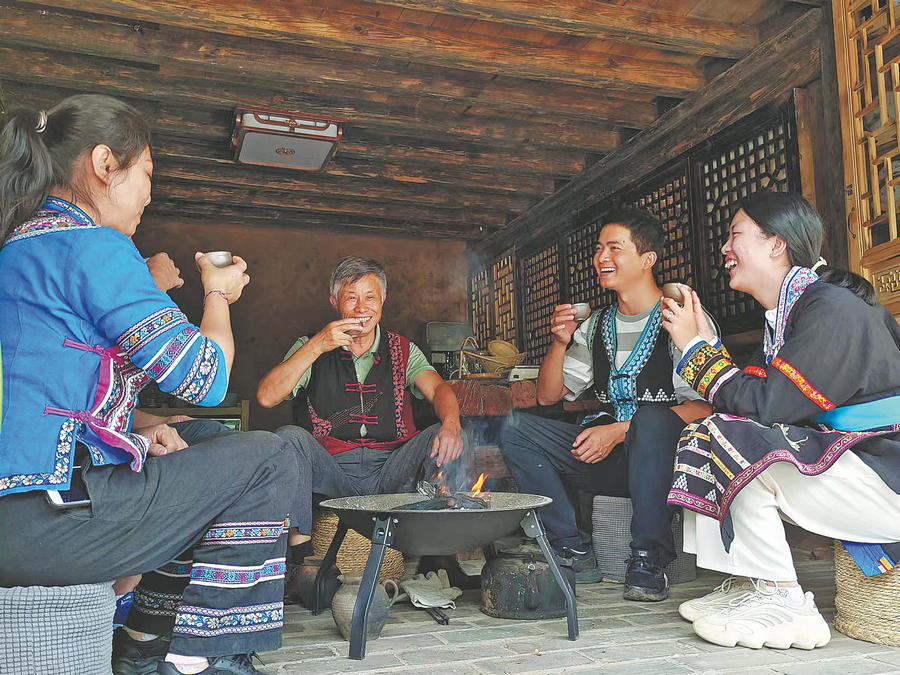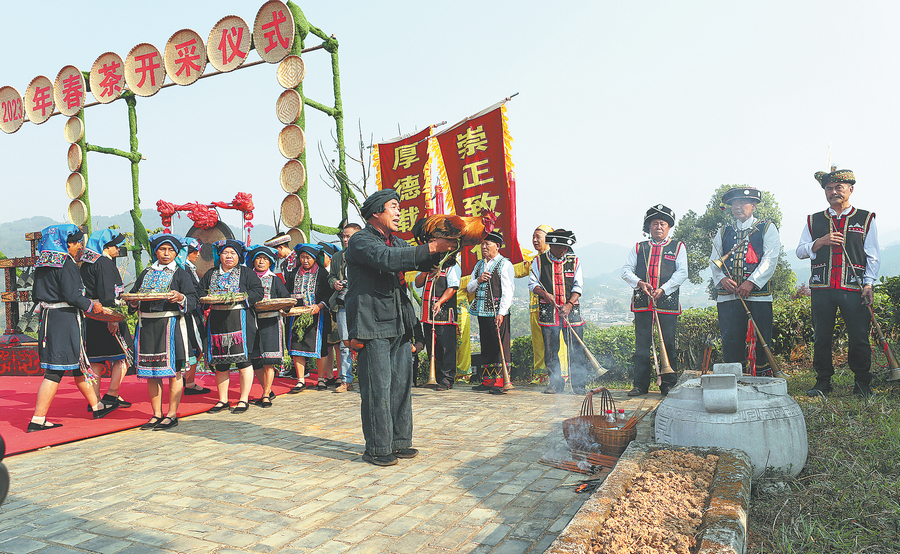

Historical roots
The area has been growing tea for more than 3,000 years. In ancient times, transportation was difficult. The tea was carried by horses, porters and caravans to other parts of the world. Pu'er was once a key stop on the ancient Tea-Horse Road, through which these little leaves were transported to Tibet and Beijing, as well as destinations in Southeast Asia and India.
As a family inheritor of the Pu'er tribute tea technique, Li Xingchang says he hopes that more people will join him to learn how to do it and spread the skill so that more tea drinkers get to know about Pu'er.
"From my mother to me, to my son, it took three generations for the family technique to become widely learned by others," Li Xingchang says of his continuing efforts to train students at vocational schools.
In mid-September, the Cultural Landscape of the Old Tea Forests of the Jingmai Mountain in Pu'er was inscribed on the UNESCO World Heritage list. Jingmai Mountain is about a two-hour drive from Kunlu Mountain where Li Xingchang's tea plantation is located. He says he is proud and happy to hear of the listing because it's a chance for Pu'er tea to be known to more people around the world.
"I sincerely invite people around the world to come to visit Pu'er and drink tea," says Li Xingchang, as he prepares a pot of the famous brew.
Contact the writer at dengzhangyu@chinadaily.com.cn
